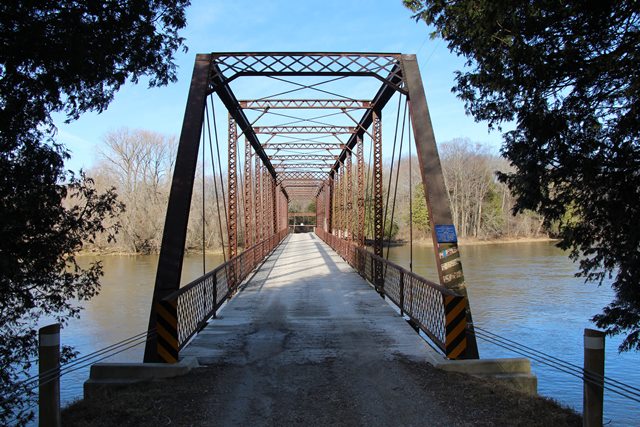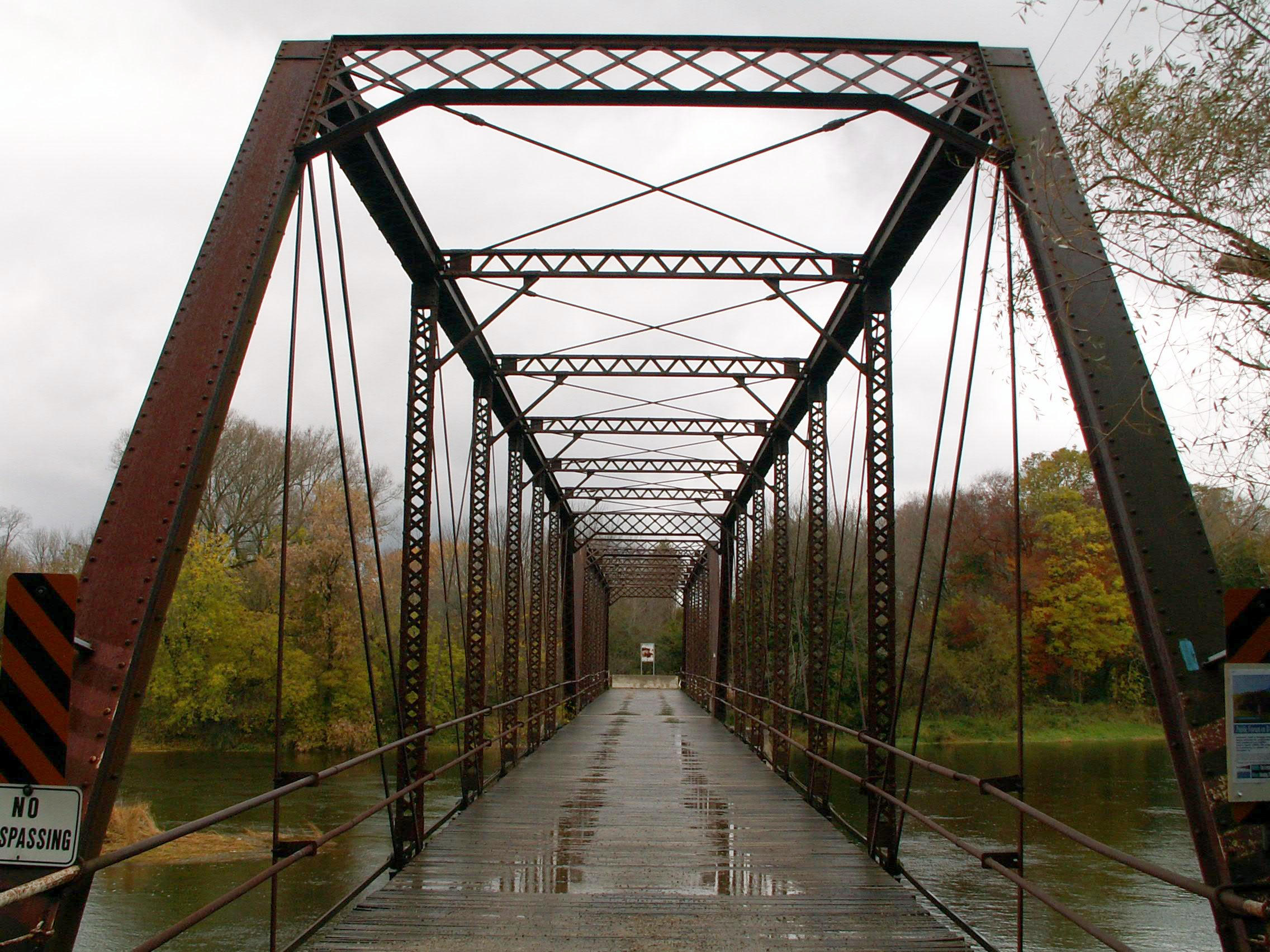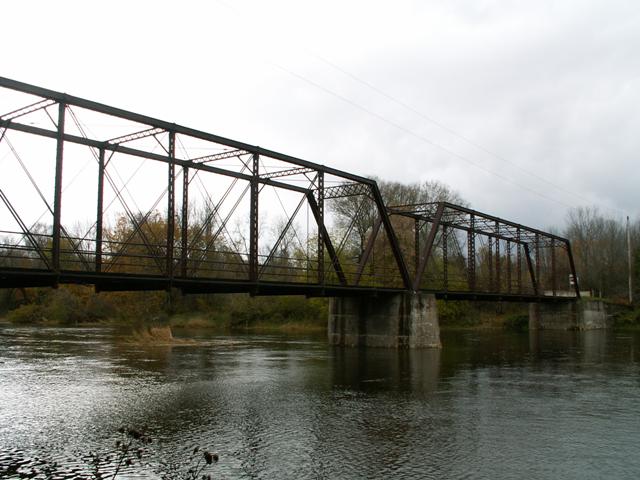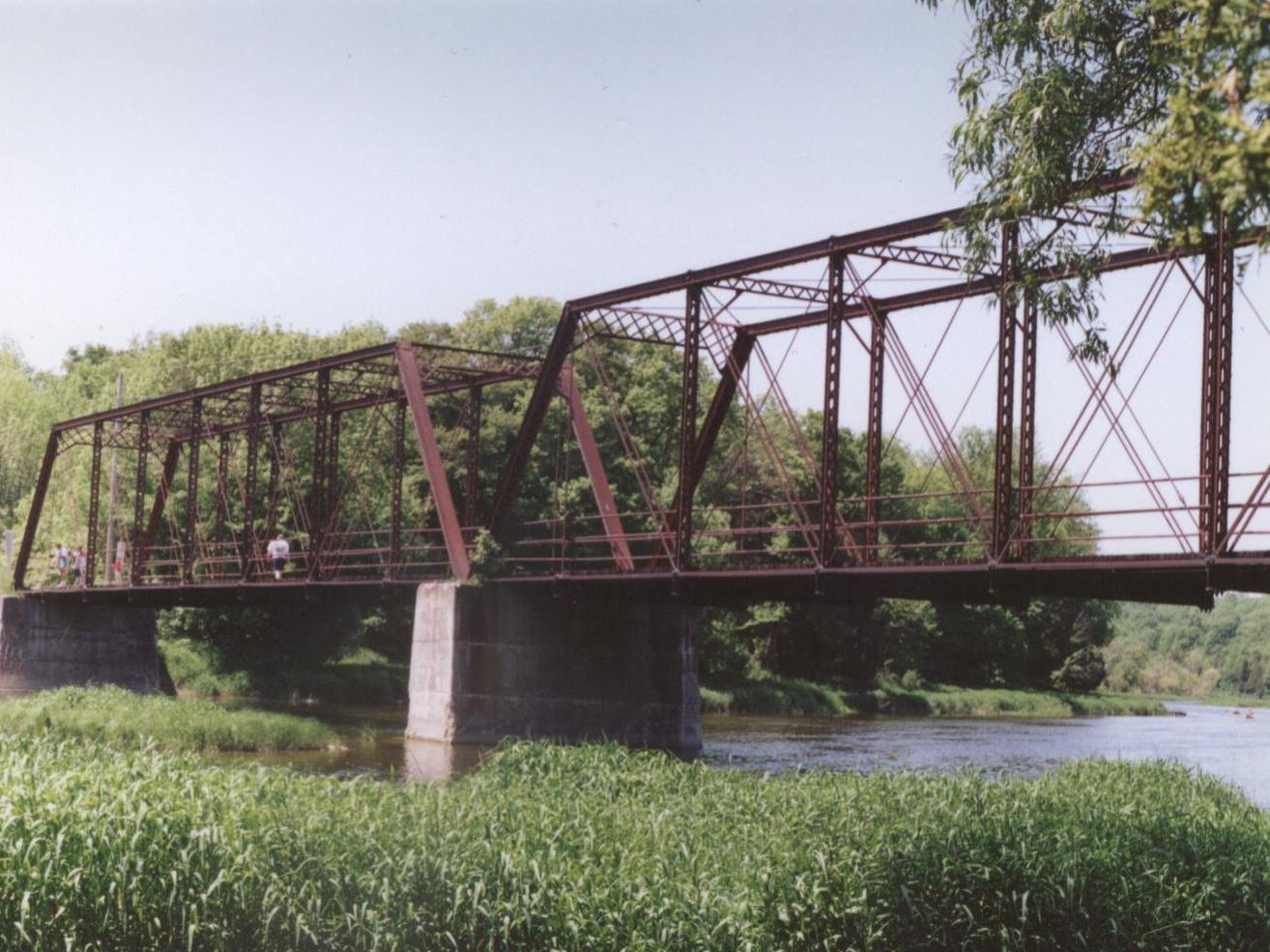We Recommend:
Bach Steel - Experts at historic truss bridge restoration.
BridgeHunter.com Phase 1 is released to the public! - Visit Now
Balls Bridge

Primary Photographer(s): Nathan Holth and Rick McOmber
Bridge Documented: October 2006 and April 11, 2015
Rural: Huron County, Ontario: Canada
1885 By Builder/Contractor: Hamilton Bridge Company of Hamilton, Ontario
2007
125.0 Feet (38.1 Meters)
250.0 Feet (76.2 Meters)
Not Available
2 Main Span(s)
Not Applicable

View Information About HSR Ratings
Bridge Documentation
Note: Bridge lengths given are a rough estimate.
View The Friends of Balls Bridge Website
View A 2006 Essay Discussing This Bridge's Significance In General
View A Presentation Given By HistoricBridges.org During A 2006 Public Forum
Introduction
Balls Bridge is a rare and highly significant heritage bridge that has, through substantial effort, been preserved so that it can remain open to light vehicular traffic. The bridge is located in a quiet, scenic setting, and visitors to this area are strongly encouraged to visit this local landmark.
The bridge is one of the few heritage truss bridges in Ontario that has actually been preserved. Sadly, since this bridge was saved in 2007, this bridge has only become more rare, given the number of bridges demolished elsewhere.
Technical Discussion
The Balls Bridge is technically defined as a two-span pin connected Pratt through truss. The bridge is supported by a concrete pier and one stone and one concrete abutment. The concrete abutment is at the west end of the bridge, while the stone is at the east end. Each span is composed of eight panels. The pin connected truss bridge was a common design during the late 1800s and early 1900s but faded away as new building techniques were developed. Due to attrition, this bridge type has become very rare today, especially in Ontario. However, the Balls Bridge remains today as an excellent example of this structure type, and a long one at two spans. Moreover, the 1885 construction date given for this bridge makes it ancient, setting it among some of the oldest wrought iron Pratt truss bridges in the U.S. and Canada. There are Carnegie mill marks present on the bridge, identifying the company who provided at least some of the iron. Not only is the bridge important because it offers a glimpse into the past, it is also a beautiful structure with many aesthetic qualities not found in modern bridges designed and built today. Bridges like the Balls Bridge were designed with a great deal attention given to the details. There is v-lacing and lattice present on various places of the bridge, which adds to the beauty. The complex arrangement of trusses form a geometric art that is unlike the simple beam bridges that are often seen on today's rivers and expressways. This bridge is irreplaceable.
Historic Significance
Ball's Bridge is
a pin connected structure, which is a feature seen on the older metal truss
bridges. Pin connected truss bridges are very rare in Ontario, and as such the
bridge is significant. Furthermore, the bridge is two-span. In southwestern Ontario, multi-span truss
bridges of any kind are uncommon, and a multi-span bridge from this era is
extremely rare! Also, the bridge trusses do not show any evidence of substantial alteration, meaning the historic integrity of the bridge is very good. So, from a historian's perspective this bridge is a treasure.
Historical significance aside, a bridge such as the Ball's Bridge is so
beautiful, and speaks of an era when bridge building included an attention to
design and detail that is no longer given on the plain modern bridges of today.
The lightweight, yet complex truss structure is a beauty to behold, and it adds
so much to the surrounding area.
It would be nothing short of a crime to demolish or let collapse, this historic
bridge. Driving across a truss bridge and experiencing the unique "tunnel
effect" is something that people deserve to have access to. This is a bridge
with history, and there are many people who have enjoyed this bridge, and many
more who can discover and enjoy this bridge in the years to come if this bridge
is preserved.
Saving The Bridge
In 2006, the fate of this bridge was uncertain. The bridge was owned by the county and their was talk of abandoning or even worse demolishing the bridge. The bridge had been closed to traffic. Fortunately, the local community got behind this heritage bridge and formed a group called Friends of Balls Bridge. A well-attended public forum was held on October 26, 2006 where a variety of people presented before a group largely in support of preserving the bridge. Nathan Holth of HistoricBridges.org was one of the presenters at this event. Long story short, efforts to save the bridge were successful and the ownership of the bridge was transferred to the willing township. The bridge was repaired during 2007-2007 and reopened to light vehicular traffic. To improve safety while maintaining a historic appearance on the bridge, replica lattice railings which were more substantial than the pipe railings on the bridge were installed. Additionally, a headache bar, which was also tastefully designed to serve as a beautiful entrance gateway to the bridge was installed to ensure trucks do not use the bridge. Additionally, interpretive signage was placed near the entrance.

![]()
Photo Galleries and Videos: Balls Bridge
2015 Bridge Photo-Documentation
Original / Full Size PhotosA collection of overview and detail photos. This gallery offers photos in the highest available resolution and file size in a touch-friendly popup viewer.
Alternatively, Browse Without Using Viewer
![]()
2015 Bridge Photo-Documentation
Mobile Optimized PhotosA collection of overview and detail photos. This gallery features data-friendly, fast-loading photos in a touch-friendly popup viewer.
Alternatively, Browse Without Using Viewer
![]()
2006 Original / Full Size Gallery
Original / Full Size PhotosFor the best visual immersion and full detail, or for use as a desktop background, this gallery presents selected overview and detail photos for this bridge in the original digital camera resolution. This gallery offers photos in the highest available resolution and file size in a touch-friendly popup viewer.
Alternatively, Browse Without Using Viewer
![]()
2006 Structure Overview
Mobile Optimized PhotosA collection of overview photos that show the bridge as a whole and general areas of the bridge. This gallery features data-friendly, fast-loading photos in a touch-friendly popup viewer.
Alternatively, Browse Without Using Viewer
![]()
2006 Structure Details
Mobile Optimized PhotosA collection of detail photos that document the parts, construction, and condition of the bridge. This gallery features data-friendly, fast-loading photos in a touch-friendly popup viewer.
Alternatively, Browse Without Using Viewer
![]()
Contributions Photo Gallery
This is a collection of photos that were taken by other people who have visited the bridge. This photo gallery contains a combination of Original Size photos and Mobile Optimized photos in a touch-friendly popup viewer.Alternatively, Browse Without Using Viewer
![]()
Nathan Holth Presentation
Full Motion VideoNathan Holth of HistoricBridges.org describes the Balls Bridge at a public forum in the Livery in Goderich in 2006. Streaming video of the bridge. Also includes a higher quality downloadable video for greater clarity or offline viewing.
![]()
Maps and Links: Balls Bridge
Coordinates (Latitude, Longitude):
Search For Additional Bridge Listings:
Additional Maps:
Google Streetview (If Available)
GeoHack (Additional Links and Coordinates)
Apple Maps (Via DuckDuckGo Search)
Apple Maps (Apple devices only)
Android: Open Location In Your Map or GPS App
Flickr Gallery (Find Nearby Photos)
Wikimedia Commons (Find Nearby Photos)
Directions Via Sygic For Android
Directions Via Sygic For iOS and Android Dolphin Browser






